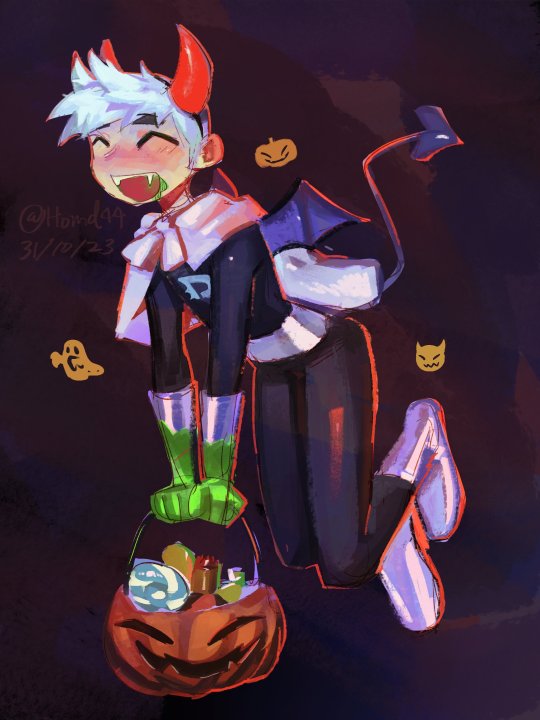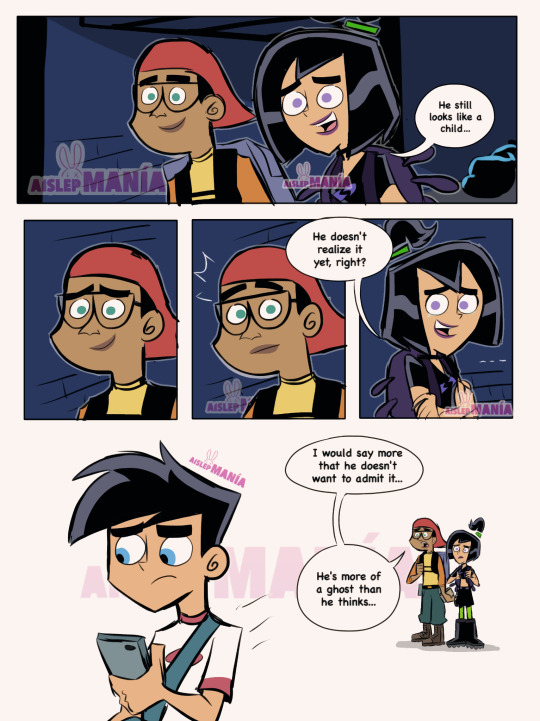childesballs
7K posts
Non-Binary, they/them, USA Overall just fandom/shipping trash. Multi-Fandom (header image by dejinyucu)
Don't wanna be here? Send us removal request.
Text
Lesser-known steps of the writing process:
Finding all the paragraphs where you used some hyper-specific word more than once
Rearranging paragraphs that you swear you wrote in the right order but turned out to be totally backwards
Going for a walk, coming up with the perfect line, and forgetting it as soon as you get home and open your laptop
Creating a separate document where you can dump all of those nice sentences that no longer fit in anywhere
Waking up in a cold sweat because so-and-so was supposed to be barefoot but never actually took his shoes off
37K notes
·
View notes
Text
nsfw sideblogs r so funny. my friend we can't talk here it isn't safe.. we have to go to sex world together
43K notes
·
View notes
Text
in times like these at least i have the character

40K notes
·
View notes
Text
I know I've said it before but I'm saying it again, I just absolutely adore how Danny's eyes glow green in human form when he's getting particularly mischievous, not just when he's especially angry


Like this boy has a built in warning signal for when he's about to be a little menace to society and I love that for him
6K notes
·
View notes
Text




















Heya! Long time no see. I’ve drawn some DP FA after reading AGIT, so here’s what I drew. mostly active in twitter or bluesky these day. I might draw more in future when im not buy
800 notes
·
View notes
Text
I don’t know who needs to hear this but there is always a way to turn your fav character into a more disgusting immoral predatory version of themselves <3 never give up
7K notes
·
View notes
Text
A question for the Phandom.
What obsession do you people have with this kids liver why cant you just let him keep it?
Why is there a whole TAG for vivisection
like i get trigger warnings but when this specific tag has MORE THAN A THOUSAND FICS (understandable, kid is a walking science experiment) FOR THIS TAG AND THE FIRST THING THEY TAKE IS ALWAYS HIS LIVER (not understandable please elaborate. normally as a layperson i would imagine the brain would be the first to end up in a jar(normally they dont seem to care if he lives or not))
376 notes
·
View notes
Text
Get these ai writing assistants out of my face!!!! I don't care if my writing is bad at least it is mine!!!!
21K notes
·
View notes
Text
happy new year! reminder that as of January 1st, 2025, the 1929 animated Disney short "The Skeleton Dance" is now public domain!

83K notes
·
View notes
Text
Okay, another little lesson for fic writers since I see it come up sometimes in fics: wine in restaurants.
When you buy a bottle of wine in a (nicer) restaurant, generally (please note my emphasis there, this is a generalization for most restaurants, but not all restaurants, especially non-US ones) you may see a waiter do a few things when they bring you the bottle.
The waiter presents the bottle to the person who ordered it
The waiter uncorks the bottle in order to serve it
The waiter hands the cork to the person who ordered the bottle
The waiter pours a small portion of the wine (barely a splash) and waits for the person who ordered it to taste it
The waiter then pours glasses for everyone else at the table, and then returns to fill up the initial taster's glass
Now, you might be thinking -- that's all pretty obvious, right? They're bringing you what you ordered, making sure you liked it, and then pouring it for the group. Wrong. It's actually a little bit more complicated than that.
The waiter presents the bottle to the person who ordered it so that they can inspect the label and vintage and make sure it's the bottle they actually ordered off the menu
The waiter uncorks the bottle so that the table can see it was unopened before this moment (i.e., not another wine they poured into an empty bottle) and well-sealed
The waiter hands the cork to the person who ordered the bottle so that they can inspect the label on the cork and determine if it matches up; they can also smell/feel the cork to see if there is any dergradation or mold that might impact the wine itself
The waiter pours a small portion for the person who ordered to taste NOT to see if they liked it -- that's a common misconception. Yes, sometimes when house wine is served by the glass, waiters will pour a portion for people to taste and agree to. But when you order a bottle, the taste isn't for approval -- you've already bought the bottle at this point! You don't get to refuse it if you don't like it. Rather, the tasting is to determine if the wine is "corked", a term that refers to when a wine is contaminated by TCA, a chemical compound that causes a specific taste/flavor. TCA can be caused by mold in corks, and is one of the only reasons you can (generally) refuse a bottle of wine you have already purchased. Most people can taste or smell TCA if they are trained for it; other people might drink the wine for a few minutes before noticing a damp, basement-like smell on the aftertaste. Once you've tasted it, you'll remember it. That first sip is your opportunity to take one for the table and save them from a possibly corked bottle of wine, which is absolutely no fun.
If you've sipped the wine (I generally smell it, I've found it's easier to smell than taste) and determined that it is safe, you then nod to your waiter. The waiter will then pour glasses for everyone else at the table. If the wine is corked, you would refuse the bottle and ask the waiter for a new bottle. If there is no new bottle, you'll either get a refund or they'll ask you to choose another option on their wine list. A good restaurant will understand that corked bottles happen randomly, and will leap at the opportunity to replace it; a bad restaurant or a restaurant with poor training will sometimes try to argue with you about whether or not it's corked. Again, it can be a subtle, subjective taste, so proceed carefully.
In restaurants, this process can happen very quickly! It's elegant and practiced. The waiter will generally uncork the bottle without setting the bottle down or bracing it against themselves. They will remove the cork without breaking it, and they will pour the wine without dripping it down the label or on the table.
12K notes
·
View notes
Text
Zoom In, Don’t Glaze Over: How to Describe Appearance Without Losing the Plot
You’ve met her before. The girl with “flowing ebony hair,” “emerald eyes,” and “lips like rose petals.” Or him, with “chiseled jawlines,” “stormy gray eyes,” and “shoulders like a Greek statue.”
We don’t know them.
We’ve just met their tropes.
Describing physical appearance is one of the trickiest — and most overdone — parts of character writing. It’s tempting to reach for shorthand: hair color, eye color, maybe a quick body scan. But if we want a reader to see someone — to feel the charge in the air when they enter a room — we need to stop writing mannequins and start writing people.
So let’s get granular. Here’s how to write physical appearance in a way that’s textured, meaningful, and deeply character-driven.
1. Hair: It’s About Story, Texture, and Care
Hair says a lot — not just about genetics, but about choices. Does your character tame it? Let it run wild? Is it dyed, greying, braided, buzzed, or piled on top of her head in a hurry?
Good hair description considers:
Texture (fine, coiled, wiry, limp, soft)
Context (windblown, sweat-damp, scorched by bleach)
Emotion (does she twist it when nervous? Is he ashamed of losing it?)
Flat: “Her long brown hair framed her face.”
Better: “Her ponytail was too tight, the kind that whispered of control issues and caffeine-fueled 4 a.m. library shifts.”
You don’t need to romanticise it. You need to make it feel real.
2. Eyes: Less Color, More Connection
We get it: her eyes are violet. Cool. But that doesn’t tell us much.
Instead of focusing solely on eye color, think about:
What the eyes do (do they dart, linger, harden?)
What others feel under them (seen, judged, safe?)
The surrounding features (dark circles, crow’s feet, smudged mascara)
Flat: “His piercing blue eyes locked on hers.”
Better: “His gaze was the kind that looked through you — like it had already weighed your worth and moved on.”
You’re not describing a passport photo. You’re describing what it feels like to be seen by them.
3. Facial Features: Use Contrast and Texture
Faces are not symmetrical ovals with random features. They’re full of tension, softness, age, emotion, and life.
Things to look for:
Asymmetry and character (a crooked nose, a scar)
Expression patterns (smiling without the eyes, habitual frowns)
Evidence of lifestyle (laugh lines, sun spots, stress acne)
Flat: “She had a delicate face.”
Better: “There was something unfinished about her face — as if her cheekbones hadn’t quite agreed on where to settle, and her mouth always seemed on the verge of disagreement.”
Let the face be a map of experience.
4. Bodies: Movement > Measurement
Forget dress sizes and six packs. Think about how bodies occupy space. How do they move? What are they hiding or showing? How do they wear their clothes — or how do the clothes wear them?
Ask:
What do others notice first? (a presence, a posture, a sound?)
How does their body express emotion? (do they go rigid, fold inwards, puff up?)
Flat: “He was tall and muscular.”
Better: “He had the kind of height that made ceilings nervous — but he moved like he was trying not to take up too much space.”
Describing someone’s body isn’t about cataloguing. It’s about showing how they exist in the world.
5. Let Emotion Tint the Lens
Who’s doing the describing? A lover? An enemy? A tired narrator? The emotional lens will shape what’s noticed and how it’s described.
In love: The chipped tooth becomes charming.
In rivalry: The smirk becomes smug.
In mourning: The face becomes blurred with memory.
Same person. Different lens. Different description.
6. Specificity is Your Superpower
Generic description = generic character. One well-chosen detail creates intimacy. Let us feel the scratch of their scarf, the clink of her earrings, the smudge of ink on their fingertips.
Examples:
“He had a habit of adjusting his collar when he lied — always clockwise, always twice.”
“Her nail polish was always chipped, but never accidentally.”
Make the reader feel like they’re the only one close enough to notice.
Describing appearance isn’t just about what your character looks like. It’s about what their appearance says — about how they move through the world, how others see them, and how they see themselves.
Zoom in on the details that matter. Skip the clichés. Let each description carry weight, story, and emotion. Because you’re not building paper dolls. You’re building people.
8K notes
·
View notes
Text
some blogs i follow for fan content but others i am 100% just there for the person so when theyre like oh sorry for turning into a so-and-so blog im like. i would watch you liveblog the phonebook.
51K notes
·
View notes
Text
101K notes
·
View notes




